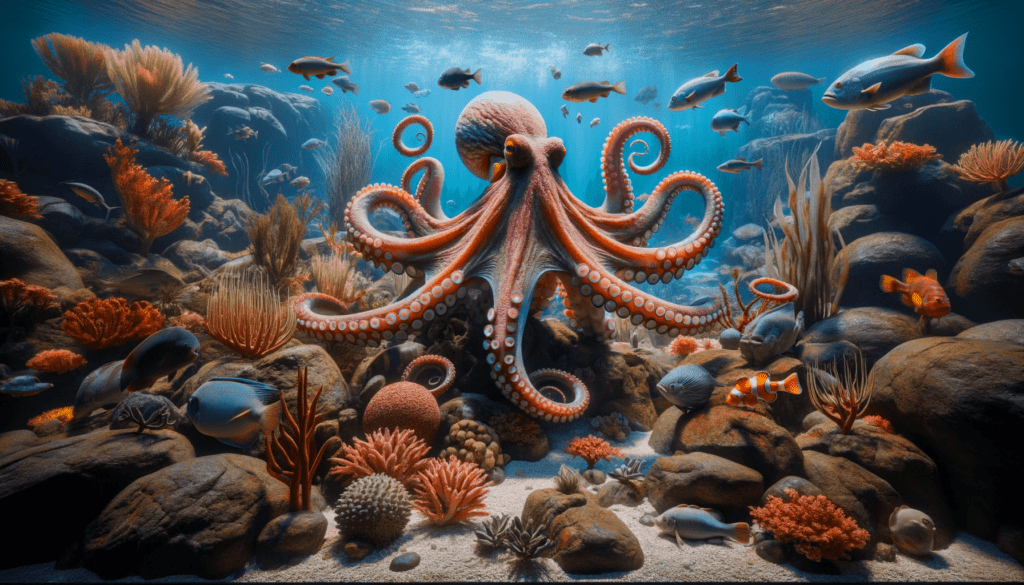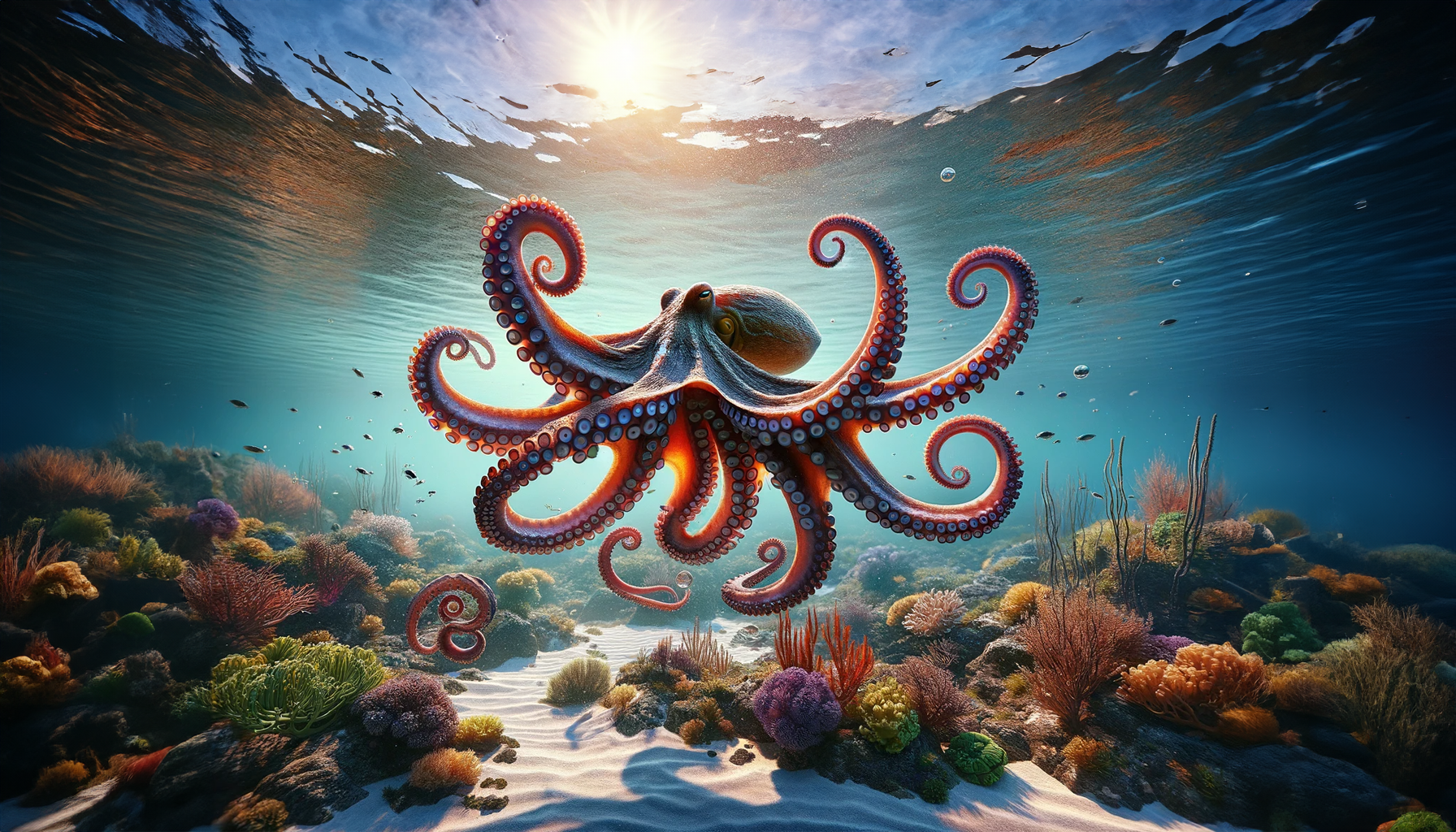Species diversity of Octopuses
Octopuses are intriguing marine animals belonging to the order Octopoda. They have unique anatomy and behavioral characteristics that distinguish them from other marine animals. There are several species of octopuses, but the exact number is difficult to determine because of ongoing discoveries and taxonomic revisions. Currently, there are more than 300 documented species of octopus known.
Dangerous Octopuses
Although octopuses are fascinating creatures, only a few species can be considered dangerous to humans. The most notorious of these is the blue-ringed octopus (Hapalochlaena spp.). This tiny octopus, found in the waters around Australia and some parts of the Pacific Ocean, carries a poison that can be potentially deadly. The toxin contains tetrodotoxin, a neurotoxin that affects the nervous system and causes respiratory problems. Human victims should seek immediate medical attention if bitten by a blue-ringed octopus.
The Biggest Octopus Ever Seen
The largest known octopus species is the giant Pacific octopus (Enteroctopus dofleini). This impressive octopus can reach a wingspan of more than 9 meters and a weight of about 272 kilograms. The giant Pacific octopus is found in the North Pacific Ocean, particularly along the coasts of North America and Japan. It is a master of camouflage and can change color and texture to blend into its surroundings. Despite its size, the giant Pacific octopus is generally not aggressive toward humans and usually avoids confrontations.
Octopuses remain a fascinating subject of study and there is still much to discover about these intriguing creatures. Their complex behavior, amazing adaptability and intelligence make them one of the most remarkable animals in the sea.
Fascinating Features and Behavior of Octopuses
1. Color Change: A Camouflage Technique.
Octopuses are known not only for their diversity, but also for their unique characteristics and intriguing behavior. One of the most striking features of octopuses is their ability to change color. They have pigment cells called chromatophores in their skin, which they can contract or relax to create different colors and patterns. This camouflage technique allows octopuses to hide from predators or sneak up on prey.
2. Intelligence and Problem-Solving Ability.
In addition to their camouflage capabilities, octopuses are also known for their intelligence. They have a well-developed nervous system and are capable of performing complex tasks. Studies have shown that octopuses are able to use tools, solve puzzles and even recognize and remember patterns. They have an extraordinary ability to learn and adapt to different environments.
3. Masterful Escape Artists
Octopuses are also masterful escape artists. They have a flexible body structure and can slip through small openings and cracks. Moreover, they have a special feature called autotomy, which means they can shed their own limbs when in danger. These limbs may grow back later. This ability allows octopuses to deceive attackers and escape from potentially dangerous situations.
4. Use of Tools and Objects.
Another fascinating behavior of octopuses is their ability to use tools. For example, they can pick up coconuts and use them for protection or as a kind of shield. Some species of octopuses even collect shells and other objects to decorate and enhance their shelters.
5. Complex Mating System
Octopuses also have complex mating behavior. In many species, the male is equipped with a special arm, called a hectocotylus, with which he transfers his sperm to the female. After fertilization, the female lays thousands of eggs and diligently guards them until they hatch. This process can take several weeks to several months, depending on the species. During this period, the female ensures that the eggs receive adequate oxygen and are protected from predators.
6. Octopuses in the Culinary World
In the culinary world, octopus are also prized for their flavor and texture. They are used in various cuisines around the world and can be prepared in various ways, such as grilled, stewed or in sushi. However, it is important to note that some octopus populations are threatened by overfishing, so sustainability and responsible fishing practices are essential to ensure their survival.
7. Ongoing Scientific Discoveries.
The research on octopuses is far from complete, and there is still much to discover about these mysterious creatures. Scientists study their intelligence, communication and social interactions to better understand their complex world. Each new insight sheds light on the evolution of intelligence and consciousness in the animal kingdom.
8. The Impact of Human Activity.
Unfortunately, some octopus populations are threatened by factors such as overfishing, habitat loss and climate change. It is crucial that we become aware of the impact of human activities on marine ecosystems and strive for sustainable practices. Through responsible fishing, protected areas and education, we can help preserve these extraordinary creatures and their habitat.
The Fascinating World of Octopuses
In conclusion, the world of octopuses is a wondrous and fascinating place. With more than 300 known species, some of which can be dangerous to humans, there is an abundance of diversity to explore. The giant Pacific octopus, with its impressive size, and the blue-ringed octopus, with its potentially deadly venom, are just a few examples of the remarkable variety in the octopus family. It is while studying these intriguing creatures that we gain a deeper understanding of the splendor and complexity of marine life and the need to protect it for future generations.



Leave a Reply